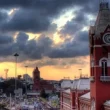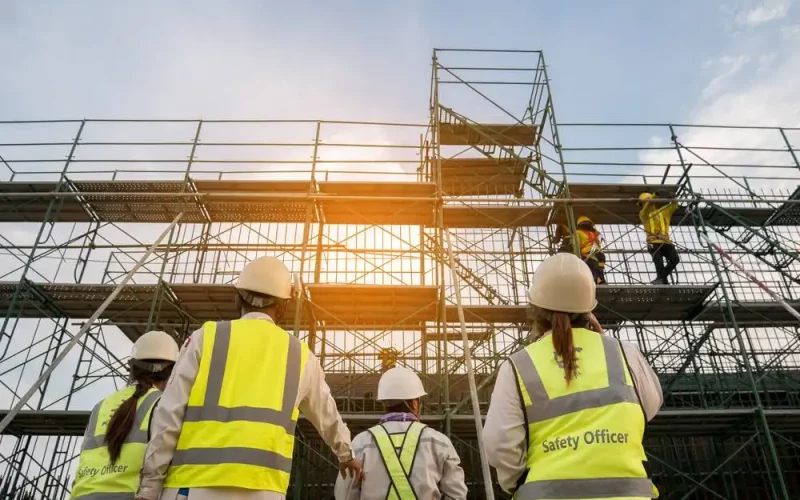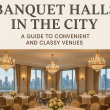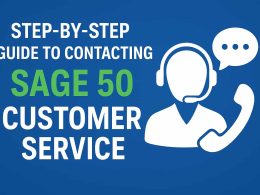Scaffolding in NYC — An Essential Urban Backbone
Walk any block in New York City, and you’re bound to encounter scaffolding. In fact, scaffolding has become such a fixture of the NYC landscape that it’s affectionately (or sometimes irritably) nicknamed “New York’s sidewalk shed jungle.” But behind this steel-and-wood network lies a critical function—protecting lives and enabling progress in one of the busiest, tallest cities in the world.
From new skyscrapers to historic building renovations, scaffolding in NYC plays a vital role in keeping the city safe, compliant, and always under construction.
Why Scaffolding is Everywhere in New York City
New York City’s skyline is constantly evolving. With over 1 million buildings, regular maintenance, upgrades, and new developments are a constant necessity.
To carry out these inspections and repairs, scaffolding must be erected around the property to protect both workers and pedestrians.
Types of Scaffolding Used in NYC
There’s no one-size-fits-all solution when it comes to scaffolding in New York City. The type of scaffolding required depends on the size, location, purpose, and condition of the project.
Here are the most common types:
-
Supported Scaffolding: Built from the ground up, it’s the most common type used for long-term construction.
-
Suspended Scaffolding: Hung from the roof, ideal for high-rise window cleaning or light repair work.
-
Frame Scaffolding: Lightweight, easy to assemble, and widely used for short-term projects.
-
System Scaffolding: Modular and ideal for complex structures with variable heights and surfaces.
-
Sidewalk Sheds: Protective structures built over sidewalks to shield pedestrians from falling debris.
Each type comes with specific installation procedures, safety requirements, and permits, especially under NYC’s Department of Buildings (DOB) regulations.
The Role of Local Law 11 and NYC DOB Regulations
Local Law 11 (FISP) has significantly increased demand for scaffolding. Passed in 1980 after a tragic incident involving falling piece of masonry, this law mandates building owners to inspect and maintain building façades regularly.
Under these guidelines:
-
Qualified inspectors must assess a building’s exterior.
-
Sidewalk sheds and scaffolding must be erected when inspection or repair work is underway.
-
Fines can exceed thousands of dollars per month for noncompliance.
Additionally, all scaffolding installations in NYC must comply with DOB safety codes, including:
-
Required permits for scaffolding over 40 feet.
-
Site safety plans and inspections.
-
Proper signage and lighting on public walkways.
Navigating these regulations requires experience and up-to-date knowledge, making choosing the right scaffolding company in NYC absolutely crucial.
Choosing a Reliable NYC Scaffolding Company
With hundreds of scaffolding contractors in NYC, how do you choose the right one?
Here’s what to look for:
-
Licensed and Insured
Ensure the company holds all necessary DOB permits and insurance coverage. This protects property owners and contractors from liability. -
Experience with NYC Regulations
A company familiar with DOB filings, FISP requirements, and safety protocols will help projects avoid costly delays or fines. -
Safety Record
Look for companies with excellent safety track record and OSHA-trained employees. -
Turnkey Services
From design and engineering to installation and dismantling, a full-service scaffolding provider simplifies construction process. -
Custom Solutions
Every NYC building is different. Custom scaffold designs tailored to the building’s structure and use case ensure better performance and safety.
Innovative Trends in NYC Scaffolding
Modern scaffolding is evolving with technology, even in city steeped in tradition like New York. Innovations making waves in the NYC scaffolding industry include:
-
Smart Scaffolding: Sensors that detect load weight, movement, or potential failures in real-time.
-
Modular Systems: Lightweight, reusable components reduce setup time and labor costs.
-
Green Sidewalk Sheds: Aesthetically designed protective sheds that improve urban appearance and reduce neighborhood disruption.
-
3D Scaffold Modeling: Engineers use CAD software to visualize scaffold designs before installation, improving accuracy and safety.
Scaffolding and Urban Aesthetics
One major criticism of NYC scaffolding is negative impact on city’s visual appeal. Long-term sidewalk sheds often darken streets, block businesses, and clutter historic architecture.
However, design-forward companies are now offering visually enhanced scaffold solutions, including:
-
Decorative panels
-
Custom branding for retail properties
-
Integrated lighting and signage
These help buildings maintain curb appeal, especially for retail or high-traffic properties.
Common Challenges in NYC Scaffolding Projects
Working in New York City brings unique obstacles:
-
Tight Spaces: Urban density requires precise planning to minimize sidewalk obstruction.
-
Traffic & Pedestrian Flow: Scaffolding must be constructed without disrupting daily life.
-
Permit Delays: DOB permits can take time, requiring early application and experience with the system.
-
Weather Conditions: NYC winters and summer storms can delay construction or compromise safety.
Scaffolding Builds the Future of NYC
In New York City, scaffolding is more than just metal pipes and planks. It’s a critical part of the city’s infrastructure, safety, and architectural evolution. Whether restoring a brownstone, maintaining a Midtown office tower, or building a new luxury high-rise, scaffolding enables progress.
Choosing the right NYC scaffolding partner means more than just erecting a structure—it means ensuring compliance, safety, innovation, and trust.https://scaffoldingshed.com/












